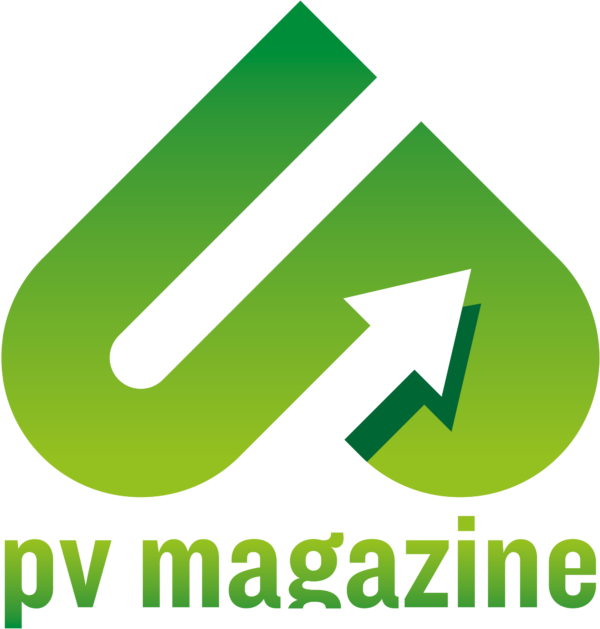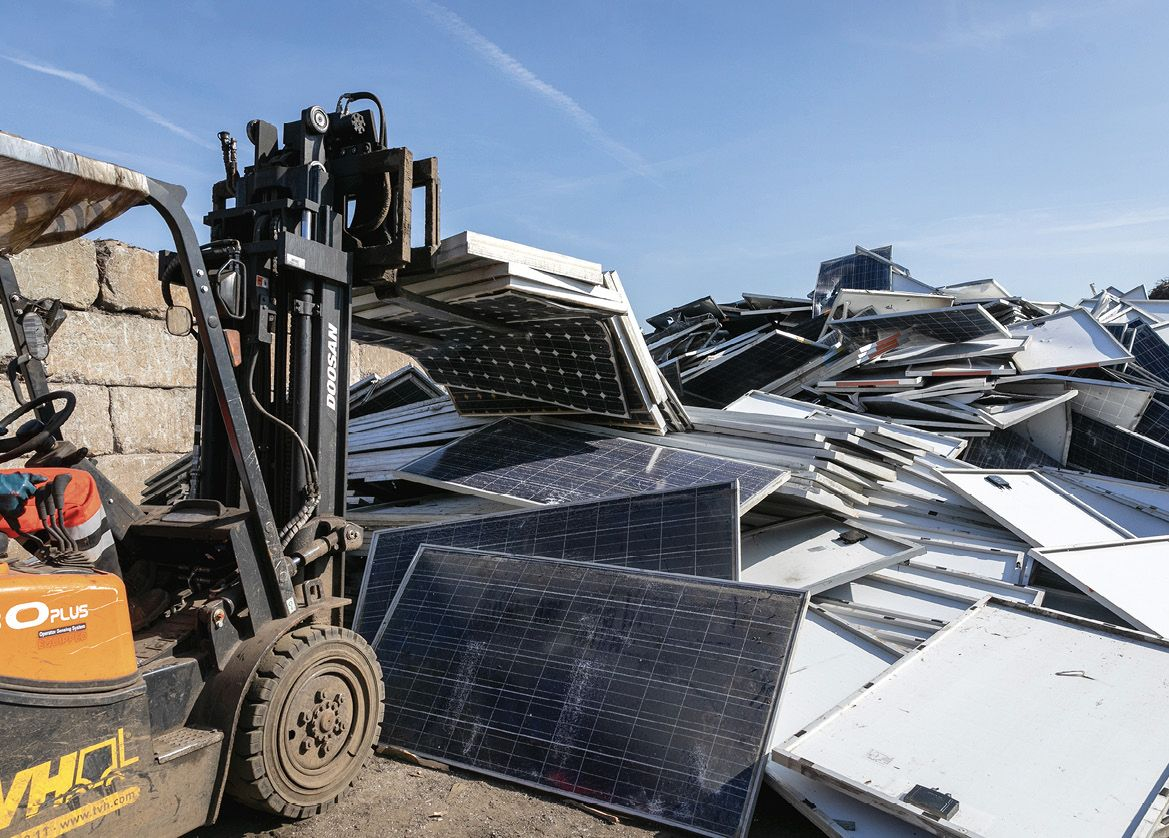 Most of the easy wins for PV module recycling have already been made. Materials such as the aluminum or steel used for module frames and the copper used in wiring can be easily separated from a panel and already have well established recycling markets. Modules can be shredded at electronic-waste or other recycling facilities and various materials can be recovered.
Most of the easy wins for PV module recycling have already been made. Materials such as the aluminum or steel used for module frames and the copper used in wiring can be easily separated from a panel and already have well established recycling markets. Modules can be shredded at electronic-waste or other recycling facilities and various materials can be recovered.
While processes of this type do keep end-of-life modules out of landfill, they lead to a downgrade in quality for the materials recovered and little chance that they’ll reach the levels of purity required to find their way back into a new solar module or any other high-value application – lengthening the line but failing to create the desired circle. Module manufacturing giant Longi confirms that it already makes use of recycled aluminum for its frames but sees the integration of other recycled material into its supply chain as a major challenge.
To keep solar panel materials in circulation indefinitely, specialized treatment is needed, rather than processing them with other waste. In the European Union, PV module waste is currently regulated under the Waste Electrical and Electronic Equipment (WEEE) directive. Writing in PV Cycle’s annual report for 2023, managing director Jan Clyncke said “the WEEE directive is not the appropriate one for photovoltaic panels. PV Cycle is in favor of a dedicated legislative act which only deals with all renewable energy equipment.”
Such legislation will be vital in making sure that modules make their way to the appropriate recyclers. On the technology side, though, there is encouraging progress from companies in Europe when it comes to replacing shredding with a process better able to separate materials.
“We naturally try to separate and reuse all the components of a module and we have learned that crushing and subsequent sorting is impractical,” said Wolfram Palitzsch, CEO of German solar recycling company Luxchemtech. “A certain proportion of the process steps must also be of a chemical nature. Mechanical processes alone do not produce pure products in the end.”
French PV recycler ROSI opened its first facility in Grenoble in 2023. It is now planning a second site in northern Spain, which is expected to come online in early 2025, and is working closely with Luxchemtech and partners to enter the German market. Rather than shredding, ROSI uses a pyrolysis process – heating in an oxygen-poor environment – to break down the polymer encapsulant that holds a module together and which can then much more effectively and cleanly separate glass and silicon cells.
Solar glass
Since it makes up the largest share by volume of materials in a PV module, glass would represent a big win for solar manufacturers – ROSI estimates that around 70% of the material processed at its Grenoble facility is glass. There is also a well-established market for recycled glass materials, which are attractive to manufacturers thanks to potential energy savings compared with processing glass raw material. The stringent quality and transparency requirements of solar glass, however, mean processing recycled material to the required level is a challenge. ROSI has made much progress in that direction in 2024 and says that the quality requirements for solar can also be an advantage when working with other glassmakers.
“The advantage of solar glass is that it has to be very transparent,” said Damien Letort, commercial manager at ROSI. “So provided you can separate it well, the quality of the recycled glass cullet that we can supply is very, very good.”
Thanks to its pyrolysis process, ROSI can separate and supply highly pure glass cullet back to glass manufacturers. Letort said that the company has been working with a client, a major European glass manufacturer, to test the quality of its recycled glass material.
“We have made some clarifications with our client and we are very happy with the results,” he said. “We can separate the glass and it is very high-transparency solar glass. That makes it very interesting for a lot of manufacturers.”
The client ROSI is working with manufactures float glass used in the building industry. Letort said that for now, it is unlikely its recycled glass material will be used in another solar panel because the vast majority of solar glass is handled in Asia and shipping such a distance wouldn’t make a lot of sense.
Despite ROSI’s success in the area, Luxchemtech’s Palitzsch warned that the presence of antimony in most solar glass is still a problem when it comes to recycling. “I don’t know of a flat glass producer in Europe that could process a shard with around 2,000 parts per million (ppm) of antimony to make PV glass, so it’s a challenge to know who would buy large quantities of antimony-containing glass in the future, and at what price,” he said.
That should be a challenge for glassmakers rather than recyclers, said Letort. “We put the solar panel through thermal treatment and mechanical sorting, and that’s the extent of our plant,” he said. “Then it’s up to our client to validate that they can deal with the glass and use it in their process.” He went on to note that the client has made strong progress working with cullets that contain some antimony, while also recognizing the problem.
“ROSI advocates for antimony-free glass in new solar panels installed in Europe, notably through the Ecolabel directive, as it opens more doors for recycling,” he explained.
Letort sees ROSI’s responsibility as supplying glass cullet with good transparency, and noted that pyrolysis can damage transparency if not carefully controlled and that the sorting process is also carefully managed to keep residues of silicon or other materials out. “We guarantee good quality transparency and clients deal with transforming our materials in their own process,” added Letort.
Silver and silicon
Silicon cells are the next biggest target and are especially attractive to recyclers thanks to their silver content. Here as well, a move away from shredding is beneficial. Palitzsch said that shredding and further processing have yielded silicon at around 80% purity. “But 80% purity is simply not interesting for many silicon applications,” he said.
Solar-grade polysilicon producers have especially high purity requirements – usually at least 6N (99.9999%). And various other materials used for doping and deposition of the other layers that make up a working solar cell can mean that even if ultra-high purity could be achieved, the profile of the remaining impurities would be different from that found in new material, requiring further investigation.
Other high-value silicon applications have slightly less stringent requirements. Here, ROSI says it is in a similar situation as with glass.
“We are in the same phase for silicon, we are working with a big partner in the chemical industry who has tested our silicon and validated that it can use it,” said Letort. “This may be one of the best added values of our process. We can maintain very good quality for the silicon, it only goes through soft treatments.”
ROSI has patented its own mild chemical process to separate the materials that make up a solar cell after they have been separated, using pyrolysis, from the rest of the module, leaving it with reusable silicon and high-purity silver.
Cost challenge
The cost of PV recycling has long been its biggest challenge – from convincing project owners to spend extra cash to keep materials out of landfill, to the actual processing and reintegration of materials.
For now, ROSI is paid to provide solar module recycling as a service, underlining the importance of clear regulation in the sector and the specialized legislation that PV Cycle and others are advocating. As PV waste begins to mount up, the processes and business models for solar recycling will be key to keeping materials in circulation. “A lot is possible technologically and a lot of money has been invested,” said Palitzsch. “This will be one of the most important issues: will the investment in the technology pay off?”
Initiative partners
This content is protected by copyright and may not be reused. If you want to cooperate with us and would like to reuse some of our content, please contact: editors@pv-magazine.com.




India will see a very huge pile of solar waste PV modules by 2030. In last three to four years some unscrupulous traders of scrap picked up material from solar farms and dumped them in remote barren land. TVS Electronics got into PV module EPR implementation based on 2016 rules and they messed up.badly in identifying correct PV module recyclers. I fully agree that PV module recycling can not be clubbed with ewaste or WEEE stream. It is high time solar supply chain talk hard and walk the talk.
Plastics first.
Plastic doesn’t leach heavy metals into your drinking water and also contains plastic so no solar PV first dummy
Wow! Very nice work you are vary talented people
Which listed company is in this field
Once again America falls behind…
If it has not died completely, gone open circuit, got cracked, at what lower power output level, dye to gradual aging, do PV facilities generally retire solar panels, as unsuitable for commercial power production?
Is there any way that panels that are naybe a quarter, third, half of their wattage output, could be passed on free to other communities to use at lower power levels, where they could give a few more years of service under less demanding conditions?
I am thinking of farms with barns out in remoter fields, and this idea might be of especial value in third world countries with scarce resources.
This would not end the need for PV panels to finally be recycled, but would both slow the flow and optimise their use.
Do not recycle!!!!!?! I reside old panels. The drive to recycle is so they don’t give them to the poor. Re Use. Give them to the poor. I live in Hawaii and yes I am poor. And yes my house is powered by old broken panels. Some are cracked with polyurethane. Some are low grade. Re use. Recycle is what the big companies want.